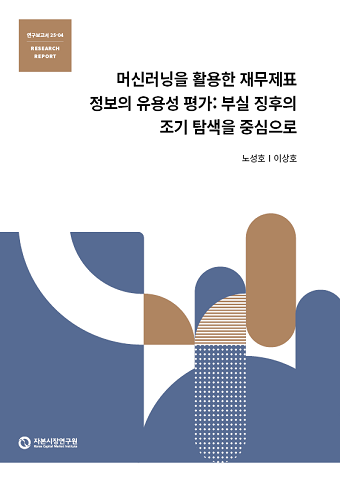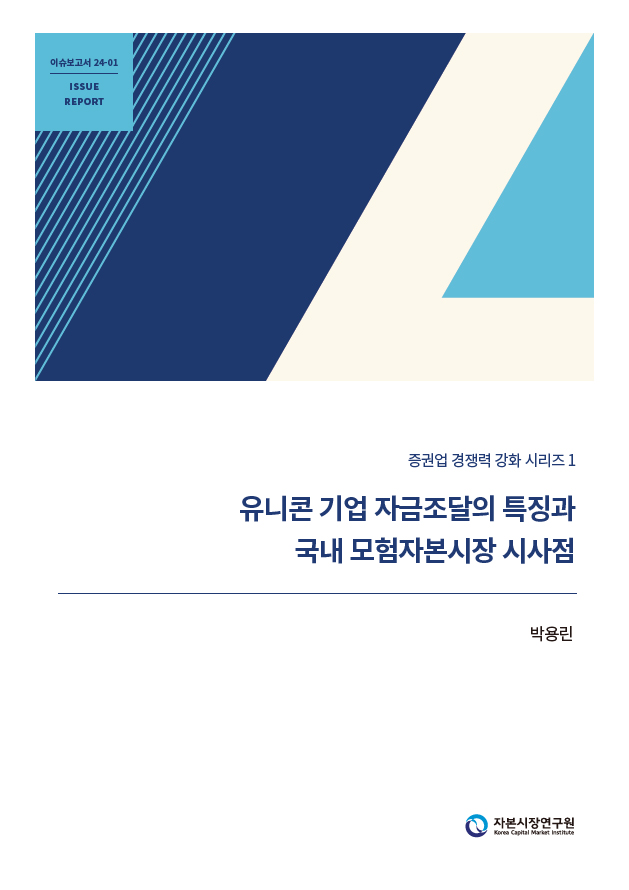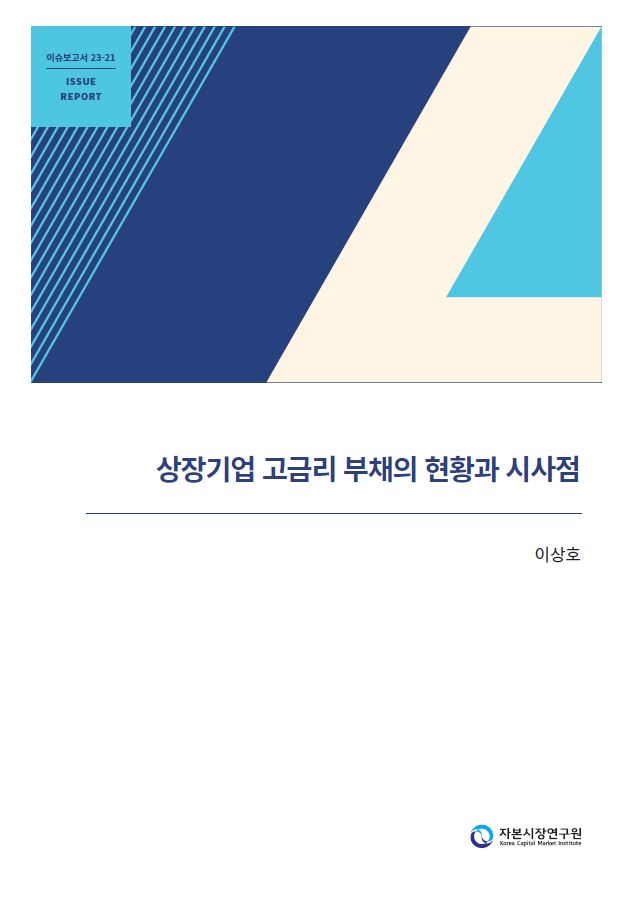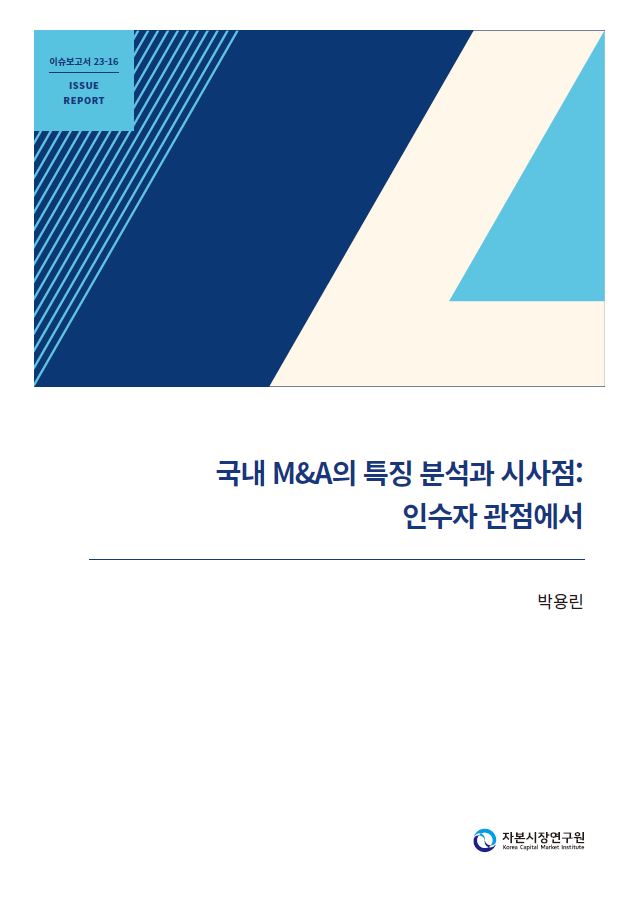Find out more about our latest publications
25 Results

This study aims to predict corporate failures in the Korean stock market. In particular, it seeks to design an effective early warning model that forecasts delisting prior to trading suspensions. To achieve this, the model incorporates not only quant...

The number of unicorns is often cited as an indicator of successful policies in innovative growth and the risk capital market. As countries compete to incubate more unicorns, unicorn incubation has become an issue of importance in both symbolic and p...

The recent surge in the US benchmark interest rate and an economic slowdown in China have instigated a sense of crisis in Korea’s capital market, which is heavily dependent on external factors. In addition, firms have experienced a sharp declin...

Recently, the Korean M&A market has captured the attention of market participants due to regulatory authorities unveiling plans to enhance support for corporate M&A. As one of the classic investment and growth strategies of businesses, M&...